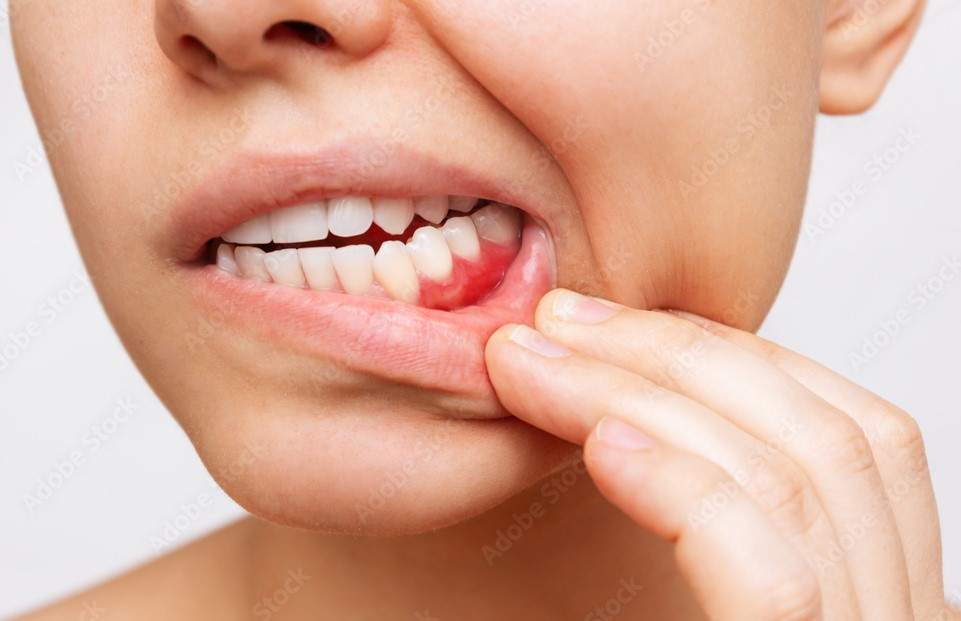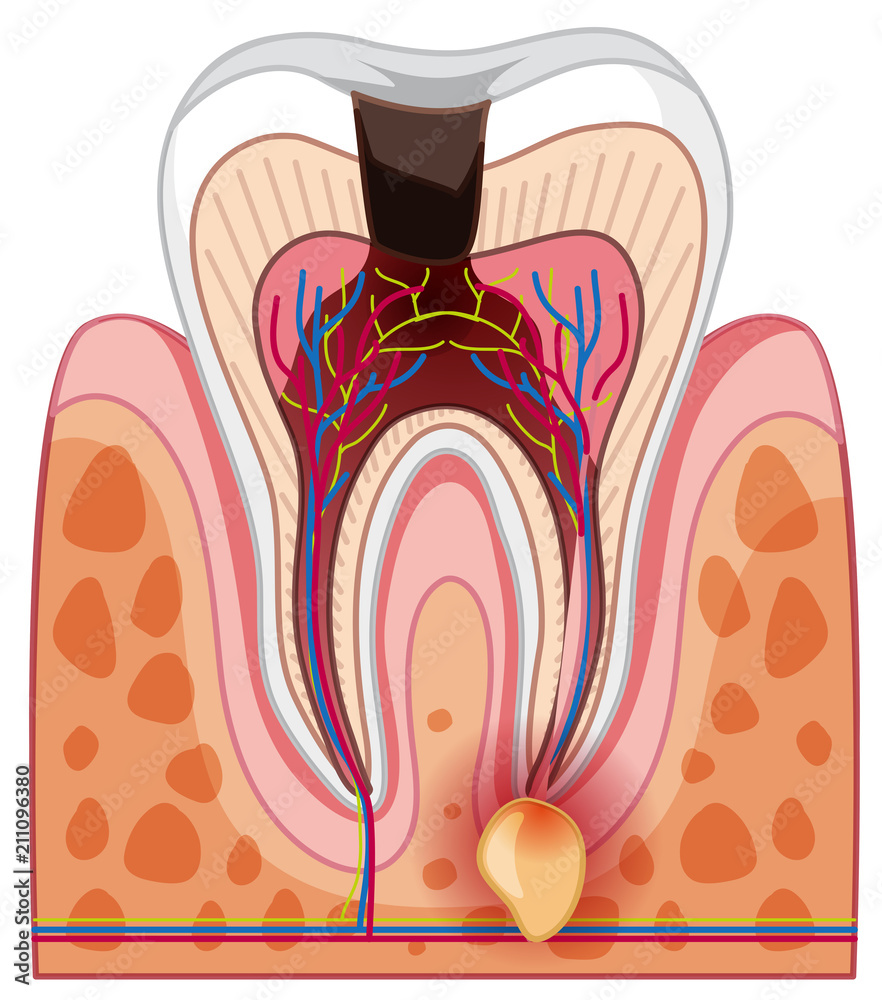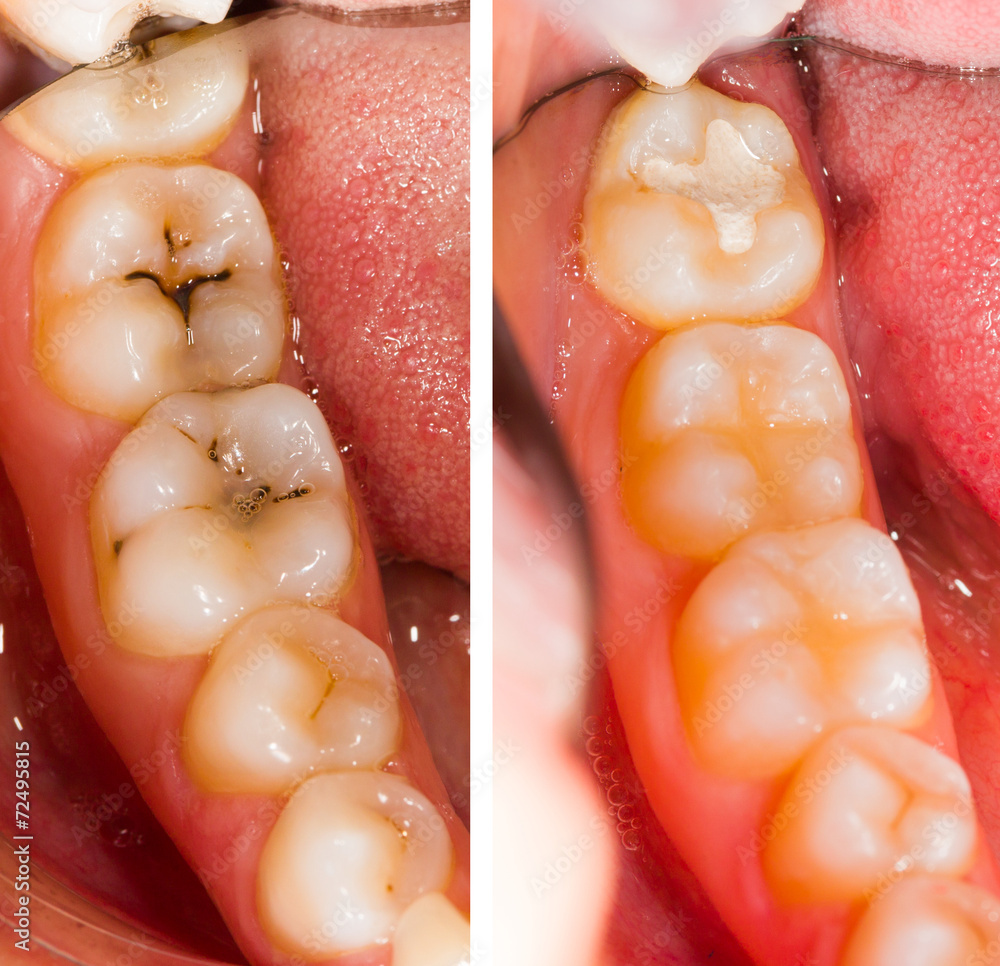Dental pain is a feeling no one wants to experience, but it isn’t always a cause for alarm. Some causes of dental pain, such as sensitive teeth or gingivitis, are easy to treat, especially with early intervention. Still, it’s crucial to be aware that certain types of dental pain are more serious than others, and everyone experiences tooth pain differently – especially young children. For this reason, understanding the type of pain you’re experiencing (and when to seek help) is crucial, particularly for parents. Timely intervention from a dentist can prevent more severe problems and restore comfort, allowing you to return to your normal routine.
Table of Contents
5 Common Types of Tooth Pain
Tooth pain can manifest in various forms that typically indicate different underlying issues. Here are some common types of tooth pain and what they may be symptomatic of:
1. Sharp, stabbing pain:
Sharp tooth pain may indicate a cracked or broken tooth, a loose filling, or tooth decay affecting the inner layers of the tooth. This pain becomes most noticeable when biting or chewing. Shooting pain in the tooth or gum area may also indicate a nerve-related issue, such as pulpitis (inflammation of the dental pulp) or trigeminal neuralgia. Regardless of the cause, stabbing pain should be assessed by a dental professional to prevent further damage to the tooth and relieve discomfort.

2. Dull, throbbing pain:
Throbbing, persistent pain, especially accompanied by swelling, fever, and sensitivity to hot or cold temperatures, can be symptomatic of an abscessed tooth or gum infection. As dental infections can spread quickly and become dangerous, you should visit an emergency dentist promptly if you experience these symptoms.
If no fever or swelling is present and the pain feels more like a dull ache or pressure around the jaw or molars, bruxism (teeth grinding) or temporomandibular joint (TMJ) disorder may be the cause. While these issues are less urgent than a dental infection, you should still see your dentist for an accurate diagnosis and treatment because jaw joint disorders can lead to premature tooth wear and damage.
3. Sensitivity to hot or cold:
Sensitivity to hot or cold foods and beverages may be caused by enamel erosion, gum recession, or cavities. Using desensitizing toothpaste and maintaining good oral hygiene can help alleviate sensitivity, but it is essential to consult a dentist for a proper diagnosis and treatment. In some cases, tooth sensitivity arises from the nerves of the teeth becoming exposed due to advanced gum disease or tooth decay, which can lead to an infection if left untreated.
4. Pain when eating or drinking:
Pain experienced while eating or drinking, particularly in a specific area of the mouth, could be due to a cavity, cracked tooth, damaged restoration, or gum disease. Promptly addressing the underlying dental problem can prevent further discomfort and complications.
5. Persistent, radiating pain:
Radiating pain that extends to the jaw, ear, or head may be associated with a dental abscess, sinus infection, or nerve inflammation. See your dentist or doctor as soon as possible to rule out potentially serious issues like infection.
To help a child describe the pain level, many experts recommend using a number rating scale. Alternatively, for very young children, the Faces Pain Scale (which shows pictures of different facial expressions, allowing the child to choose an image that represents their level of pain) can be a helpful tool. You should also ask your child to describe where the pain is and what it feels like to gain a better understanding of their symptoms.
Identifying Potential Causes of Toothaches
Toothache can have many potential causes, including:
Tooth decay/Cavities:
Tooth decay occurs when bacteria in the mouth produce acids that erode tooth enamel, leading to pain, sensitivity, and the development of cavities (also known as dental caries). Untreated cavities can progress to affect the deeper layers of the tooth, causing discomfort and eventual infection.
Gum disease:
Gum disease, such as periodontitis, can cause inflammation, recession of the gums, and damage to the supporting structures of the teeth. Gum disease typically develops when plaque builds up below the gum line (a common consequence of forgoing regular dental cleanings). Gum infections and abscesses resulting from periodontitis can cause localized pain and swelling around the affected tooth or teeth.

Dental trauma:
Injury, teeth grinding (bruxism), a misaligned bite, or biting on hard objects can cause tooth cracks, chips, or damaged dental restorations, leading to sharp pain when chewing or biting. This pain occurs because fractured teeth often expose the inner layers (dentin, pulp, and nerves) of the tooth, causing sensitivity and discomfort.
Bruxism (teeth grinding):
In addition to potentially chipping and cracking the teeth, bruxism can slowly erode dental enamel, causing tooth sensitivity. People with bruxism may also notice soreness and tenderness of the jaw muscles, which arises from repetitive strain.
Tooth infections or abscesses:
Tooth infections and abscesses are the most serious causes of dental pain, requiring immediate attention from a dentist (or medical professional, if a dentist is not available). An abscessed tooth occurs when bacteria reaches the dental pulp (innermost part of the tooth) through a deep cavity or fracture, resulting in severe pain, swelling, pus formation, and potential systemic complications if left untreated.

Gum Recession:
Receding gums expose the sensitive root surfaces of teeth, leading to increased sensitivity to hot, cold, and sweet stimuli. Gum recession can be caused by periodontal disease, aggressive brushing, aging, smoking, or certain medications, resulting in discomfort and aesthetic concerns.
When to See Your Dentist
Though it may be tempting to wait and see if tooth pain gets better on its own, certain types of discomfort must be treated as a dental emergency. If you (or your child) experience any of the following symptoms, see your dentist immediately:
- Pain that persists for more than a few days or rapidly gets worse.
- Swelling, pus, or other signs of infection around the affected area, or the presence of a fever.
- Difficulty opening the mouth or swallowing.
- Changes in the colour, shape, or sensitivity of the teeth. (E.g., feeling a hole or gap in the teeth that wasn’t present before, noticing an area of dark or yellowish discolouration, or suddenly experiencing discomfort when consuming hot, cold, or sweet foods or beverages.)
- Experiencing any kind of injury or trauma to the mouth, such as a hard fall or sports injury.
Diagnostic Procedures
Dentists typically employ multiple specialized tests, along with an oral exam, to diagnose tooth pain. By combining information from clinical examinations, medical imaging, and other diagnostic tools, dentists can pinpoint the underlying cause of tooth pain and tailor treatment recommendations accordingly.
Some common diagnostic tests and examinations that a dentist may perform to diagnose tooth pain include:
Visual Examination:
A thorough examination of the mouth, teeth, and gums allows the dentist to detect any visible signs of decay, damage, inflammation, or infection. The dentist will also inquire about the nature of the pain, its onset, triggers, and any associated symptoms. This information helps the dentist select the best diagnostic tests to meet the patient’s needs.
X-rays (Radiographs):
Dental X-rays provide detailed images of the teeth, roots, jawbone, and surrounding structures, aiding in the detection of cavities, fractures, abscesses, and bone loss. X-rays help dentists visualize areas not visible to the naked eye and diagnose underlying dental issues accurately.
Pulp Testing:
Pulp vitality and sensitivity tests help dentists assess the health and responsiveness of the dental pulp (innermost part of the tooth). Changes in pulp sensitivity or blood supply can indicate inflammation (pulpitis), infection, or nerve damage, guiding the diagnosis and treatment approach.
Periodontal Probing:
Periodontal probing involves measuring the depth of gum pockets around the teeth to evaluate the presence of gum disease, recession, or periodontal pockets. Deep pockets, bleeding gums, and gum attachment loss indicate periodontal problems that may cause tooth pain.
Transillumination:
Transillumination involves shining a light through the tooth to detect cracks or other abnormalities in the tooth structure that may contribute to pain or sensitivity. Transillumination can reveal hidden defects not visible on the tooth’s surface.
CT Scans:
In complex cases where detailed imagery is required for accurate diagnosis and treatment, dentists may use computed tomography (CT) scans to obtain comprehensive 3D images of the teeth, jaws, and surrounding tissues. The CT scans used in dentistry are less intensive than those used in regular medicine, taking only a few minutes and using very little radiation, so patients should not be concerned if their dentist recommends this option.
Bite Analysis:
A bite analysis evaluates the alignment of the teeth, their operation together with the jaw, and occlusal (bite) forces to identify issues (such as malocclusion, temporomandibular joint (TMJ) problems, or bruxism) that may contribute to tooth pain or discomfort.
Treatment Options For Different Types of Tooth Pain
If you’re experiencing dental pain, the good news is that finding relief is as easy as visiting your dentist. Modern anesthetics allow dentists to quickly and completely numb affected teeth, meaning you won’t feel anything during treatment – and your pain will go away immediately.
Depending on the cause of your tooth pain, your dentist may recommend one of the following treatments:
Dental crowns or fillings:
Dental crowns and fillings are commonly used to “fill in” cavities and repair cracked or chipped teeth, with crowns being used to cover extensive damage or decay. These treatments involve removing areas of decay, if necessary, and placing a tooth-coloured composite resin material over the affected area (or, in the case of crowns, over the whole tooth).

Root canal therapy:
During root canal therapy, the diseased or dead pulp is surgically removed from the tooth, and the root canals are filled with a flexible rubber compound known as gutta-percha. Then, a crown is placed over the tooth to protect it. This treatment is typically used to treat an infected or abscessed tooth.
Antibiotics and pain medication:
Along with root canal therapy, your dentist may prescribe antibiotics and pain medication to treat active infection and restore comfort.
Periodontal treatments:
If your tooth pain or sensitivity is being caused by gum disease, deep-cleaning procedures like scaling and root planing can bring you relief. Scaling involves removing plaque and tartar from deep below the gum line, whereas root planing smooths the tooth roots, ridding them of bacteria so they can heal. For gum recession, gum grafting may be used to cover exposed tooth roots.
Mouthguards or splints:
Mouthguards and splints are non-invasive treatments that can alleviate symptoms of bruxism. Typically worn overnight, these dental devices prevent the teeth from coming into contact with one another, protecting them from wear and damage.
Conclusion
Many common causes of tooth pain, such as tooth decay and gum disease, can be prevented with regular dental checkups. Having your teeth cleaned and examined by a dentist at least twice a year ensures that plaque and tartar do not build up and allows small cracks, chips, and fissures in the teeth to be identified and treated early. By taking these steps – and knowing when to seek help for dental pain – you can prevent discomfort and the need for invasive treatments.
If you suffer from dental anxiety that’s making you apprehensive to seek treatment for toothache, we can help. Our caring, compassionate team of Mississauga dentists can guide you through your treatment options, taking the time to reassure you every step of the way. As experienced pediatric dentists, we also know how to make young children feel safe and comfortable while visiting our clinic.
Don’t delay treatment if you’re experiencing toothache or discomfort: Contact Dr. Dalmao today for fast, painless relief


